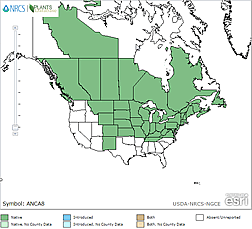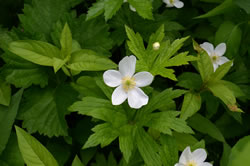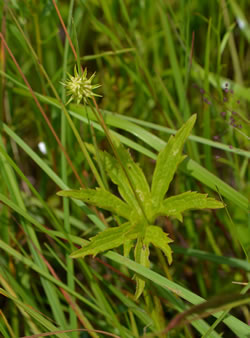Plant of the Week
Canada Anemone (Anemone canadensis)
By Christopher David Benda
This wildflower is called Canada anemone or meadow anemone. It is a member of the buttercup family (Ranunculuaceae). “Anemone” means “windflower” and refers to the fluffy seeds of some species that are dispersed by wind. Others suggest that the flowers open in the spring wind. According to Greek mythology, Zephyr, the god of the west wind, was infatuated with a nymph named Anemone. Zephyr’s wife Flora was angered by this so she turned Anemone in to a flower that would open when wooed by Boeeas, the god of the north wind. This species was discovered in Canada hence the species epithet “canadensis”.
This species often occurs in large colonies, and the mass blooms can be spectacular. The showy flowers have five, white, petal-like structures technically called sepals, and contrasting numerous, yellow, male and female flower parts reside in the middle of them. One to three flowers occur on long, hairy leafless peduncles (stalks), although a pair of small, leaf-like bracts can occur on them. The leaves are lobed with 3 to 5 oblanceolate sections that are further divided into 2 to 3 lobes at the tip. The leaves are opposite and sessile on the stem, and somewhat resemble Geranium leaves.
Instead of producing a thimble-like inflorescence with fluffy seeds like many other Anemone species, this species produces a bur-like cluster of flattened seeds with long beaks. This perennial species is rhizomatous, so it tends to grow in large colonies, often crowding out other vegetation. It prefers moist situations like prairie depressions, roadsides, and streams. This species occurs in the Midwest, from Montana to Maine, and as far south as Missouri, with an isolated population in the southwest as well.




